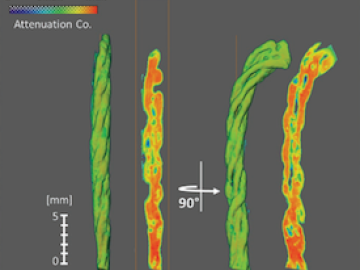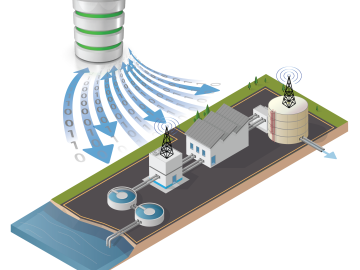
Filter News
Area of Research
- Biology and Environment (27)
- Biology and Soft Matter (1)
- Computer Science (1)
- Electricity and Smart Grid (1)
- Energy Science (29)
- Functional Materials for Energy (2)
- Fusion and Fission (5)
- Isotopes (2)
- Materials (31)
- Materials for Computing (4)
- National Security (18)
- Neutron Science (16)
- Nuclear Science and Technology (1)
- Supercomputing (21)
News Topics
- (-) Advanced Reactors (4)
- (-) Big Data (11)
- (-) Computer Science (26)
- (-) Cybersecurity (9)
- (-) Energy Storage (26)
- (-) Grid (13)
- (-) Materials Science (18)
- (-) Nanotechnology (9)
- (-) Neutron Science (15)
- (-) Physics (12)
- 3-D Printing/Advanced Manufacturing (13)
- Artificial Intelligence (15)
- Bioenergy (21)
- Biology (30)
- Biomedical (6)
- Biotechnology (3)
- Buildings (16)
- Chemical Sciences (15)
- Clean Water (5)
- Composites (4)
- Coronavirus (9)
- Critical Materials (4)
- Element Discovery (1)
- Environment (40)
- Exascale Computing (9)
- Fossil Energy (1)
- Frontier (10)
- Fusion (8)
- High-Performance Computing (16)
- Hydropower (8)
- Irradiation (1)
- Isotopes (4)
- ITER (2)
- Machine Learning (10)
- Materials (37)
- Mercury (2)
- Microscopy (14)
- National Security (17)
- Nuclear Energy (10)
- Partnerships (8)
- Polymers (5)
- Quantum Computing (7)
- Quantum Science (9)
- Security (4)
- Simulation (6)
- Space Exploration (4)
- Summit (7)
- Transportation (12)
Media Contacts

The rapid pace of global climate change has added urgency to developing technologies that reduce the carbon footprint of transportation technologies, especially in sectors that are difficult to electrify.

A force within the supercomputing community, Jack Dongarra developed software packages that became standard in the industry, allowing high-performance computers to become increasingly more powerful in recent decades.

From helping 750 million viewers watch Princess Diana’s wedding to enabling individual neutron scientists observe subatomic events, Graeme Murdoch has helped engineer some of the world’s grandest sights and most exciting scientific discoveries.

A study by researchers at the ORNL takes a fresh look at what could become the first step toward a new generation of solar batteries.

Surrounded by the mountains of landlocked Tennessee, Oak Ridge National Laboratory’s Teri O’Meara is focused on understanding the future of the vitally important ecosystems lining the nation’s coasts.

Textile engineering researchers from North Carolina State University used neutrons at Oak Ridge National Laboratory to identify a special wicking mechanism in a type of cotton yarn that allows the fibers to control the flow of liquid across certain strands.

Oak Ridge National Laboratory scientists worked with the Colorado School of Mines and Baylor University to develop and test control methods for autonomous water treatment plants that use less energy and generate less waste.

To study how space radiation affects materials for spacecraft and satellites, Oak Ridge National Laboratory scientists sent samples to the International Space Station. The results will inform design of radiation-resistant magnetic and electronic systems.

ORNL and the Tennessee Valley Authority, or TVA, are joining forces to advance decarbonization technologies from discovery through deployment through a new memorandum of understanding, or MOU.

A study led by researchers at ORNL used the nation’s fastest supercomputer to close in on the answer to a central question of modern physics that could help conduct development of the next generation of energy technologies.


